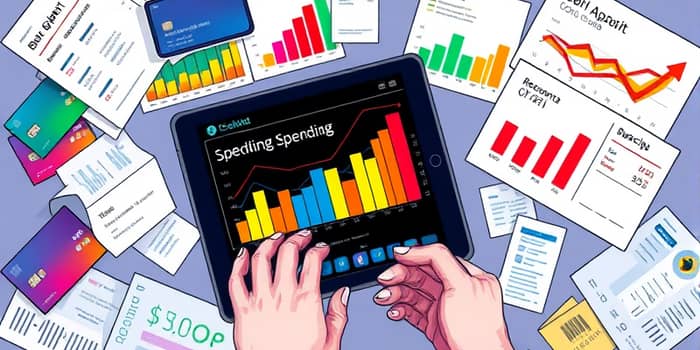Managing your card expenses doesn’t have to be overwhelming. With the right approach and tools, you can stay in control of your finances and achieve your financial goals.
Why Tracking Card Spending Matters
Keeping a close eye on your credit and debit card expenses delivers critical insights into where your money goes each month. It helps you avoid unwanted surprises and maintain a stable financial foundation.
By tracking every transaction, you not only monitor spending in real time but also detect fraudulent charges swiftly. This level of awareness supports better budgeting, uncovers saving opportunities, and strengthens your overall financial health.
Leverage Built-In Issuer Tools
Many credit card issuers provide free, in-app dashboards that categorize your expenditures, visualize trends, and offer historical spending summaries. These features take the guesswork out of budgeting.
- Chase: Detailed spending summaries, category overviews, and customizable graphs for monthly or yearly insights.
- Capital One: Transaction filters, annual spending breakdowns, and convenient sorting by category or merchant.
- Citi: Real-time alerts, spending categories, and downloadable statements for deeper analysis.
These tools empower you to visualize trends and spending categories effortlessly without extra software.
Third-Party Apps and Expense Tracking Software
When you need advanced analytics and automation, specialized apps can streamline the process. They sync with multiple accounts, categorize expenses, and generate comprehensive reports.
- Mint (Free): Budget creation, spend visualization, and bill reminders with bank-level security.
- YNAB ($14.99/month): Proactive budgeting that encourages giving every dollar a job, with users saving hundreds early on.
- MoneyPatrol (Basic $19.99/year): Aggregates accounts, tracks APRs, credit utilization, and personalized alerts.
With these solutions, you can automate expense tracking effortlessly and access your financial snapshot anytime.
Manual Tracking with Spreadsheets
For those who value complete customization and hands-on control, spreadsheets offer a flexible solution. Whether you build your own template or use a service like Tiller, you decide how to categorize and display data.
This method ensures total customization and privacy control. You maintain full ownership of your financial records without recurring subscription costs.
However, manual entry can be time-consuming, and you may miss out on automated alerts if you fall behind on updates.
Comparing Tracking Methods
Each method brings unique advantages based on your needs, from minimal effort to detailed analytics.
Best Practices for Effective Tracking
Adopting sound habits ensures that your tracking efforts translate into meaningful results. Consistency is key.
- Review transactions weekly or monthly to spot anomalies early.
- Set spending limits per category and adjust as needs change.
- Separate personal and business card use to simplify bookkeeping.
- Enable digital receipts and archive them for easy cross-checking.
- Use alerts to notify you of large purchases or unusual activity.
When you schedule regular expense reviews, you catch overspending before it undermines your goals.
Reconciling and Advanced Insights
Reconciliation is the process of matching your records against official statements. It’s essential for maintaining accuracy and trust in your data.
By taking the time to catch errors before they escalate, you reduce the risk of fraud and ensure your budgets remain on track.
Advanced users or small business owners may leverage tools like Quicken or Expensify to integrate investment tracking, receipt approvals, and reimbursement workflows, delivering a holistic financial picture.
Tips for Sustainable Financial Health
Tracking card spending is more than just number crunching—it’s about building a mindset of intentional spending and saving. Empower yourself with the knowledge that each purchase informs your better financial decisions.
Remember to:
- Experiment with different tools until you find the right fit.
- Take advantage of free trials or basic tiers to test features.
- Stay adaptable—adjust budgets to reflect life changes like moving or job shifts.
- Celebrate milestones when you meet saving targets or reduce debt.
With diligent tracking and thoughtful reflection, you can empower your financial journey daily and confidently work toward long-term goals like debt freedom, emergency savings, or investment growth.
References
- https://www.nerdwallet.com/article/credit-cards/credit-cards-manage-budget
- https://www.helcim.com/guides/track-business-credit-card-expenses/
- https://www.creditcards.com/card-advice/credit-card-spend-tracking-tools/
- https://www.skylacu.com/learning-guidance/tracking-credit-card-spending
- https://irensaltali.com/the-ultimate-guide-to-spending-tracking-tools-comparing-top-options-for-managing-your-finances/
- https://upgradedpoints.com/credit-cards/best-credit-card-spending-tracker-apps/
- https://cash.app/legal/us/en-us/tos
- https://www.nerdwallet.com/article/finance/tracking-monthly-expenses










